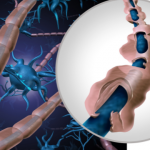We often forget to have a ‘heart-to-heart’ about the health of our hearts. And yet, the heart – a muscular pump that keeps blood flowing around the body, is central to our overall health. It accepts blood from the organs and tissues and pumps it to the lungs to be enriched with oxygen.
The oxygen-rich blood is then returned to the heart and pumped to the tissues of the body to supply them with oxygen.
The human heart should beat about 3 billion times from birth to the age of 90 years.
However, along the way, many things can go wrong with the human heart, including the muscle organ itself, the valves that help blood flow, its rhythm, and the blood vessels that transport the blood. As a result, any condition affecting the heart and the entire circulatory system is generally referred to as heart disease or cardiovascular disease (CVD). Genetic factors, lifestyle, congenital disabilities, infections, or a combination of factors can cause CVD.
For decades physicians were trained in the diagnosis and treatment of coronary artery disease after it occurred. However, the present epidemic of cardiovascular disease, diabetes, and their complications of heart attacks, strokes, and heart failure has necessitated a change of focus to prevention. So, the adage, ‘prevention is better than cure’ still serves true.
For most people, preventing heart disease depends on lifestyle, which means there is much in our power to improve the odds of living long and maintaining a healthy heart.
Of the various risk factors contributing to CVDs, hypertension has the most significant impact, responsible for 13% of deaths globally. Ten people suffer a stroke in South Africa, every hour and 225 South Africans are killed by heart diseases every day, yet 80% of heart disease and stroke can be prevented.
What can you do to reduce CVD risks?
Get tested: CVD risks result from a combination of an unhealthy lifestyle, genetics, or other complications, which only a medical doctor can diagnose. So the first step to improving your blood pressure is to find the reason for the elevation. Book an appointment with your doctor to get a health screening.
Chocolate and wine (in moderation): A moderate consumption of chocolate and wine can also contribute to heart health, even for people with a history of cardiovascular disease. Red wine contains antioxidants that increase good cholesterol (HDL), decrease bad cholesterol (LDL), and improve blood vessel and blood-clotting functions. On the other hand, cacao beans are full of polyphenols known as flavonoids, which help protect the cacao plant from toxins and repair cell damage. In addition, both wine and chocolate have beneficial effects on insulin sensitivity.
Lose weight: Being overweight is linked with several major risk factors for heart disease, including high blood pressure, type 2 diabetes, and destructive forms of cholesterol. In addition, as our bodyweight rises, so does our risk for plaque build-up in our arteries and a heart attack.
Quit smoking: When you inhale cigarette smoke, your heart rate and blood pressure go up temporarily. But, over time, smoking clogs your arteries, increases inflammation, weakens bones, and weakens the overall immune system. Other lifestyle-based approaches to improving your heart health include exercise, eating healthier food, and stress management.
So, exercise more, a bit of chocolate and wine, and a good laugh with friends should give you a few more years and keep your heart hearty.
Sources:
- https://www.heartfoundation.co.za/types-of-heart-disease/
- https://www.medicalnewstoday.com/articles/237191
- https://www.gov.za/faq/health-non-communicable-diseases/what-non-communicable-disease
- https://facty.com/lifestyle/wellness/10-natural-ways-to-reduce-blood-pressure/
- https://www.pritikin.com/improving-heart-health-naturally
- https://www.ucihealth.org/blog/2017/02/how-to-strengthen-heart
- https://www.webmd.com/heart-disease/quit-smoking-helps-heart












